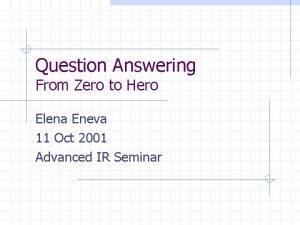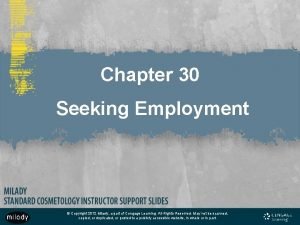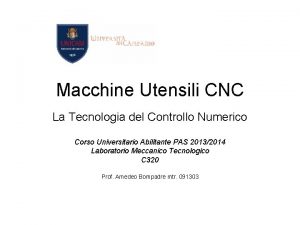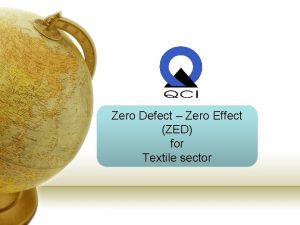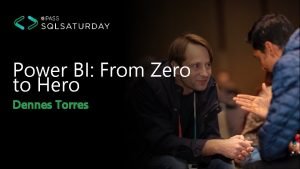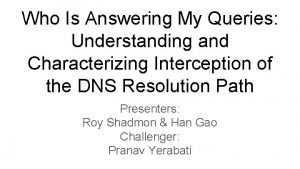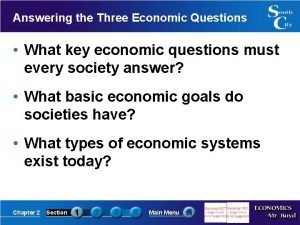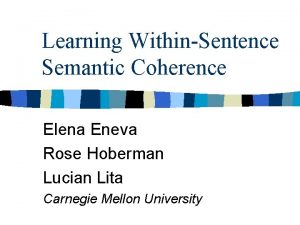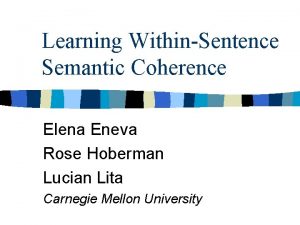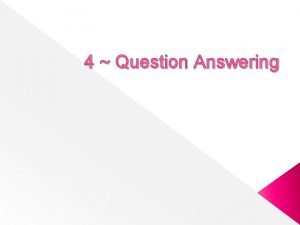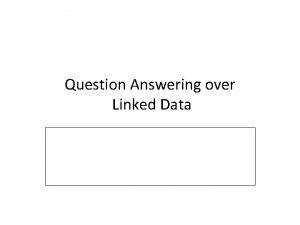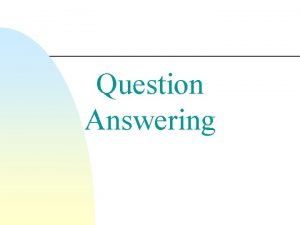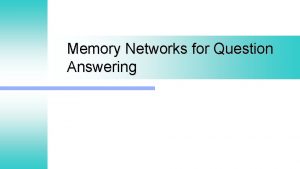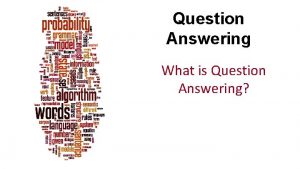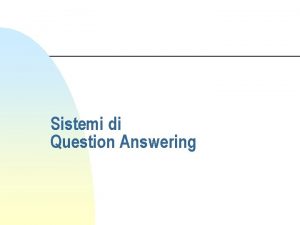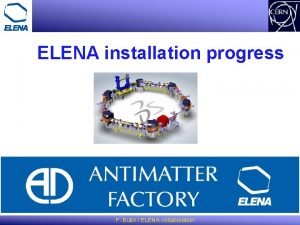Question Answering From Zero to Hero Elena Eneva













- Slides: 13

Question Answering From Zero to Hero Elena Eneva 11 Oct 2001 Advanced IR Seminar

Sources V P C TREC-9. 2001. http: //la. lti. cs. cmu. edu/Javelin E. Voorhees. "The Overview of the TREC-9 Question Answering track. " J. Prager, E. Brown, A. Coden and D. Radev. "Question answering by predictive annotation. " SIGIR '00. C. L. A. Clarke, G. V. Cormack and T. R. Lynam. "Exploiting redundancy in question answering. " In Proceedings of the 24 th Annual International ACM SIGIR Conference on Research and Development in Information Retrieval. 2001.

Question Answering IR n n Successful in large scale text search problems Retrieve full documents IE n n Successful in extracting very precise answers from text Work on pre-specified domains Combining the strengths

QA track in TREC Collection of unstructured documents (table 1 in V) Short factual questions in English (Why can't ostriches fly ? Where did Bill Gates go to college ? ) also figure 1 in V Return answer as a ranked list of 5 fragments of documents (2 categories: 50 and 250 bytes)

Evaluation By people Reciprocal rank of first correct answer or 0 % answers which were found Strict and Lenient scores (supported and unsupported judgment) Short and Long version

2 QA TREK systems Question Answering by Predictive Annotation - Prager, Brown, Coden (IBM) and Radev (U of Michigan) Exploiting Redundancy in Question Answering - Clarke, Cormack, Lynam (U of Waterloo) Ranking - Table 2 in V

Exploiting Redundancy in Figure 1 in C Question Answering Question -> a query for submission to a passage retrieval component -> a set of selection rules what guides the process of extracting answers from the passages (answer category) Get a list of k passages Identify possible answers Rank the possible answers Question analysis – IR – IE

3 features with greatest contribution Flexibility of the parser Passage retrieval technique (high quality passages) Redundancy in the answer selection component – contribution of evidence from multiple passages to identify the most likely answer

Passage Retrieval techniques Each document D is an ordered sequence of terms D= d 1 d 2 d 3 … dm Extent (u, v) (minimal) Query Q generated from the question Q={q 1, q 2, q 3, …} Compute the score for an extent(u, v) for which T Q is a cover Higher scores to passages whose P of occurrence is lower

Redundancy Each candidate term t is is assigned a weight that takes into account the number of distinct passages in which the term appears, as well as the relative frequency of the term in the database Wt = Ct log (N/ft) Ct is the number of distinct passages in which t appears Summing the weights of a all terms in a candidate answer Determine the first one, reduce weights to 0, do all over until have 5 Figure 2 in C

Exploiting redundancy “Who” questions 100 GB corpus K depth, W width Figure 2 in C

Who wants to be a Millionaire? Real life example 70% correct overall Figure 5 in C

Question answering by predictive annotation IBM system Shallow NLP System structure Figure 1 in P Annotation Indexing
 Elena from zero to hero
Elena from zero to hero Open source question answering system
Open source question answering system What habits and characteristics do test-wise students have
What habits and characteristics do test-wise students have Costa assessment answers
Costa assessment answers Programmazione cnc simulator
Programmazione cnc simulator Zero defect zero effect
Zero defect zero effect Power bi zero to hero
Power bi zero to hero Zero to hero admiral markets
Zero to hero admiral markets Romantic hero archetype
Romantic hero archetype Anti hero traits
Anti hero traits Answering my queries
Answering my queries Specialty answering service
Specialty answering service Chapter 2 section 1 answering the three economic questions
Chapter 2 section 1 answering the three economic questions Present continuous tense ke example
Present continuous tense ke example
